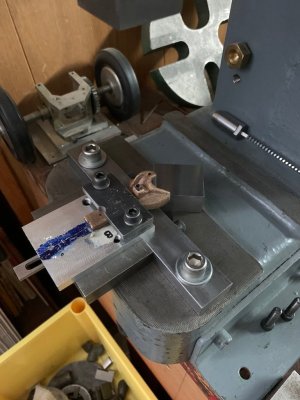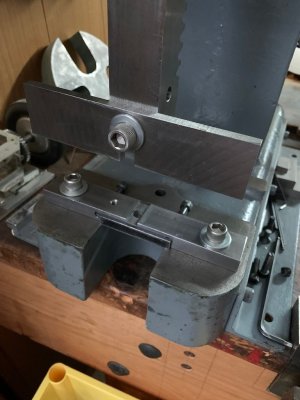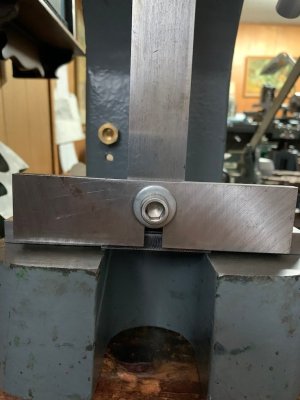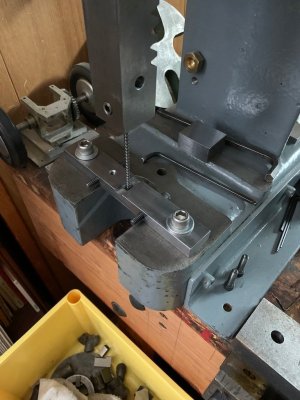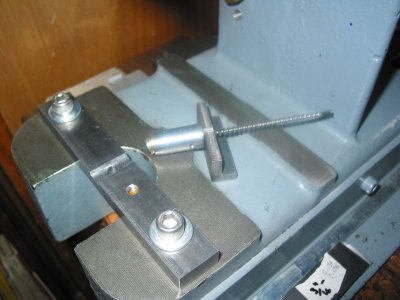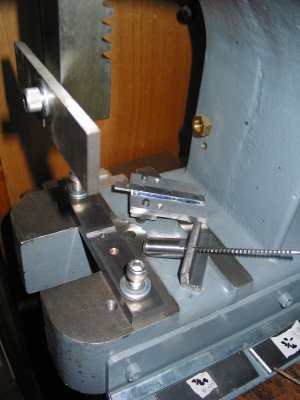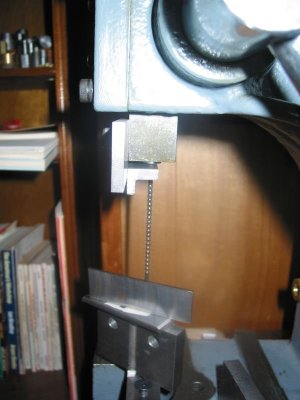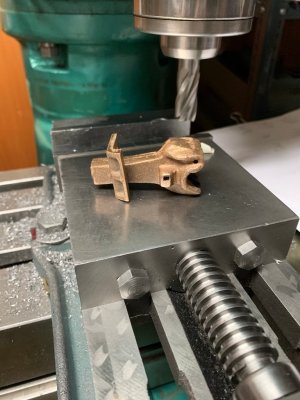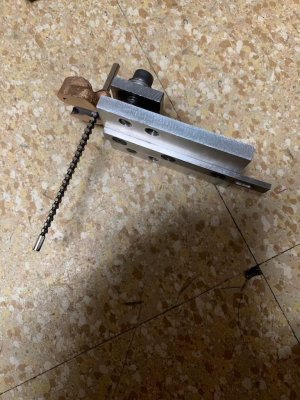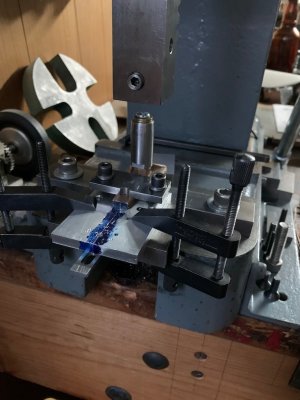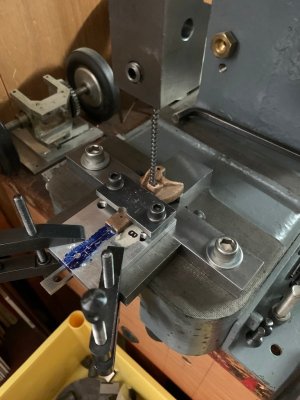HI All,
I think that only I could do it this way. When conditions become pressing! All of the following for only one operation.
How to turn a standard bench arbor press into something else.
Anyway, the story. I purchased this used bench arbor press some decades ago now and slowly have been transforming it into my go to tool for things it was never designed to do. It seems that this is a situation which repeats itself over and over again.
This press came with a few non standard features which I guess had been added by the previous owner(s). Chief among these was the ram, which had been modified to accept a precision 5/8" diameter reamed centre hole in the pressing end which would allow one to insert various other tools and a drilled and threaded base which would allow one to attach numerous fixtures to the base of the press. This turned out to be extremely useful in my case.
I added some additional modifications of my own namely I drilled and reamed a new access hole in the side of the ram as seen in photos 665 and 667. In certain high pressure broaching situations, the broach head steady as seen in photo 669, despite being tapered at one end would lock itself in the centre hole in the ram so I needed to be able to insert a non metallic drift to mechanically free the broach assembly after use.
The broach seen in photo 669 is a 1/8" square DuMont. These small broaches are obscenely expensive and quite delicate so you need to do everything humanly possible to align the broach straight and square to the work and prevent any off centre or sideways slippage/bending when broaching.
What is to follow is what I do to achieve the above and it approaches the insane.
To be continued.
I think that only I could do it this way. When conditions become pressing! All of the following for only one operation.
How to turn a standard bench arbor press into something else.
Anyway, the story. I purchased this used bench arbor press some decades ago now and slowly have been transforming it into my go to tool for things it was never designed to do. It seems that this is a situation which repeats itself over and over again.
This press came with a few non standard features which I guess had been added by the previous owner(s). Chief among these was the ram, which had been modified to accept a precision 5/8" diameter reamed centre hole in the pressing end which would allow one to insert various other tools and a drilled and threaded base which would allow one to attach numerous fixtures to the base of the press. This turned out to be extremely useful in my case.
I added some additional modifications of my own namely I drilled and reamed a new access hole in the side of the ram as seen in photos 665 and 667. In certain high pressure broaching situations, the broach head steady as seen in photo 669, despite being tapered at one end would lock itself in the centre hole in the ram so I needed to be able to insert a non metallic drift to mechanically free the broach assembly after use.
The broach seen in photo 669 is a 1/8" square DuMont. These small broaches are obscenely expensive and quite delicate so you need to do everything humanly possible to align the broach straight and square to the work and prevent any off centre or sideways slippage/bending when broaching.
What is to follow is what I do to achieve the above and it approaches the insane.
To be continued.
Attachments
-
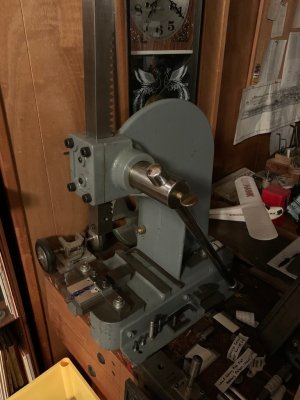 663 The Bench Arbor Press.jpg124.8 KB · Views: 30
663 The Bench Arbor Press.jpg124.8 KB · Views: 30 -
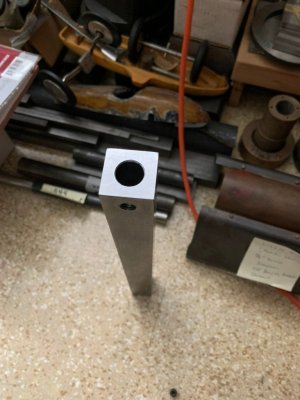 664 The Pressing End of the Arbor Press Ram.jpeg110.3 KB · Views: 26
664 The Pressing End of the Arbor Press Ram.jpeg110.3 KB · Views: 26 -
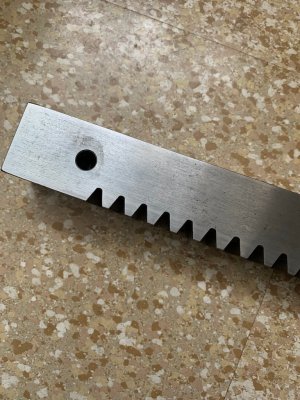 665 The Pressing End of the Ram.jpg183.1 KB · Views: 14
665 The Pressing End of the Ram.jpg183.1 KB · Views: 14 -
 666 The Pressing End of the Ram.jpg193.8 KB · Views: 13
666 The Pressing End of the Ram.jpg193.8 KB · Views: 13 -
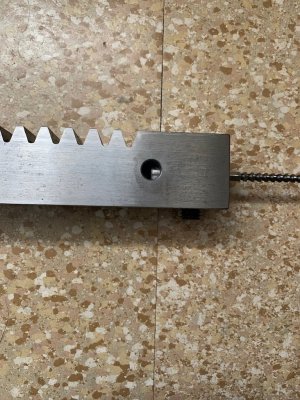 667 The Pressing End of the Ram.jpg219 KB · Views: 13
667 The Pressing End of the Ram.jpg219 KB · Views: 13 -
 668 The Arbor Press Base.jpg116.7 KB · Views: 17
668 The Arbor Press Base.jpg116.7 KB · Views: 17 -
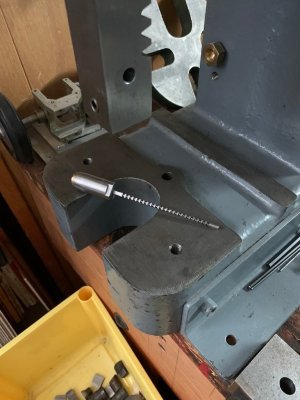 669 The Arbor Press Base.jpg122.8 KB · Views: 31
669 The Arbor Press Base.jpg122.8 KB · Views: 31

